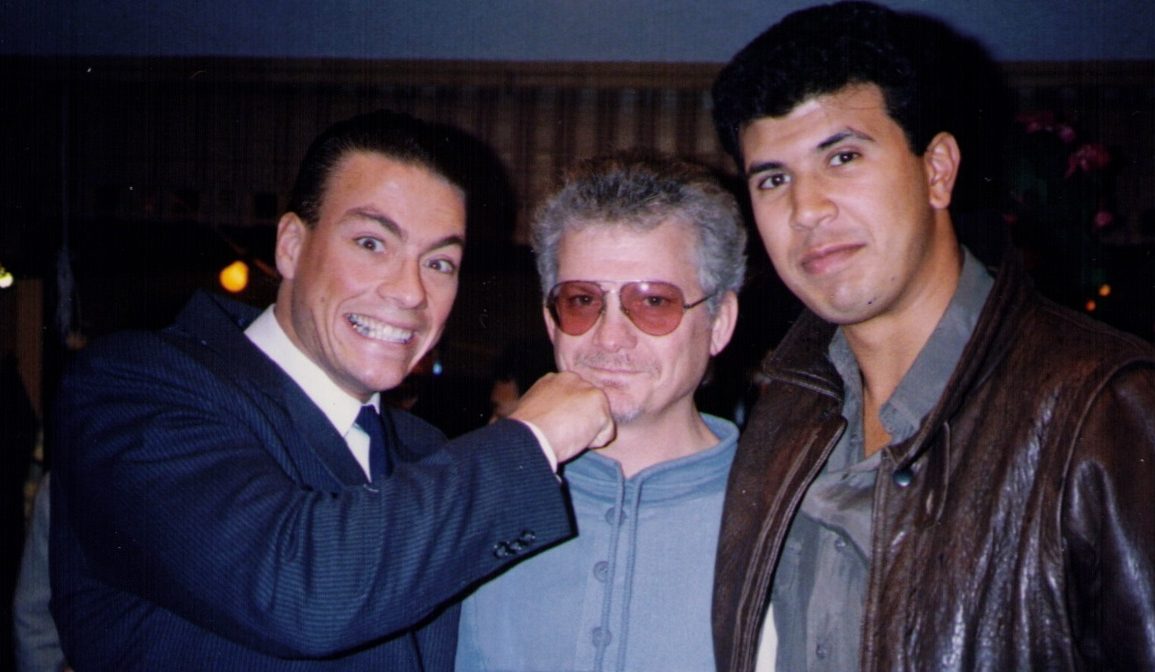[dropcap size=small]D[/dropcap]avid Worth has been Director of Photography on films like Bloodsport, Bronco Billy, Any Which Way You Can and many more. He also directed the Jean-Claude Van Damme classic Kickboxer, True Vengeance starring Daniel Bernhardt, Lady Dragon 1 and 2 starring Cynthia Rothrock and Chain of Command with Michael Dudikoff to name just a few films from his impressive resume.
I was lucky enough to have a great chat with David the other day where he shared some stories from his career where we focus mostly on Kickboxer, its legacy and True Vengeance.
True Vengeance remains one of my favourite Daniel Bernhardt movies with some great action scenes; can you talk about some of the influences behind it?
My influences were all of the Bruce Lee movies and the John Woo movies; I would say that my action was my attempt to do something in John Woo’s style. I couldn’t even come close as John Woo had like 125 days in Hong Kong to do those movies and I had 26 days in America so you can’t even come close. You can kind of go after it a bit.
Cynthia Rothrock is one of the great ladies of action cinema
Were there ever any plans for a sequel to True Vengeance? Still not too late…
Well the company behind the movie sadly went out of business so that was the main reason we never got a follow up. It was certainly open ended and could be brought back any time. Usually low budget action movies like this don’t get sequels. The exceptions were my Lady Dragon 1 and 2; those were such small movies, under a million dollars each and filmed in Jakarta. They were really just done with will and bubblegum and scotch tape; they were just really hard to do but it was nice that Cynthia and I got to work together. She really is one of the great ladies of action cinema.

I still consider her arguably the greatest female action star of all time.
Yeah, she started in Hong Kong and when I worked with her in Jakarta they didn’t even have Craft Service on the set; we’d ask where the bathroom was and they’d say “see that tree over there?” (laughs). I mean, it was really primitive but there wasn’t one word of complaint from Cynthia. She’s the one in front of the camera fighting it out in the dirt all day every day; I was so pleased to work with her. I thought all the stars back in their trailers in Hollywood with their lattes could take some lessons in humility and hard work. Cynthia Rothrock really is a Queen.
I love the sword fight at the end of True Vengeance between Daniel Bernhardt and Miles O’Keefe; what was it like to put together?
We put it together very carefully, step by step; everything I did on that film I had what my camera assistants call “The Peckinpah Package”. I had three cameras on everything; one normal speed, one 48 frames per second and one at 96 frames a second so I could intercut all those things to highlight a moment. We tried to cover it so we could take it into the editing room and make it as exciting as possible. Miles and Daniel did a great job on that because they were working with basically real weapons and we don’t want anyone to get hurt. So everyone did that step by step. Move by move. We wouldn’t try putting together too long a series of things as you don’t want someone to miss a mark and get hurt.
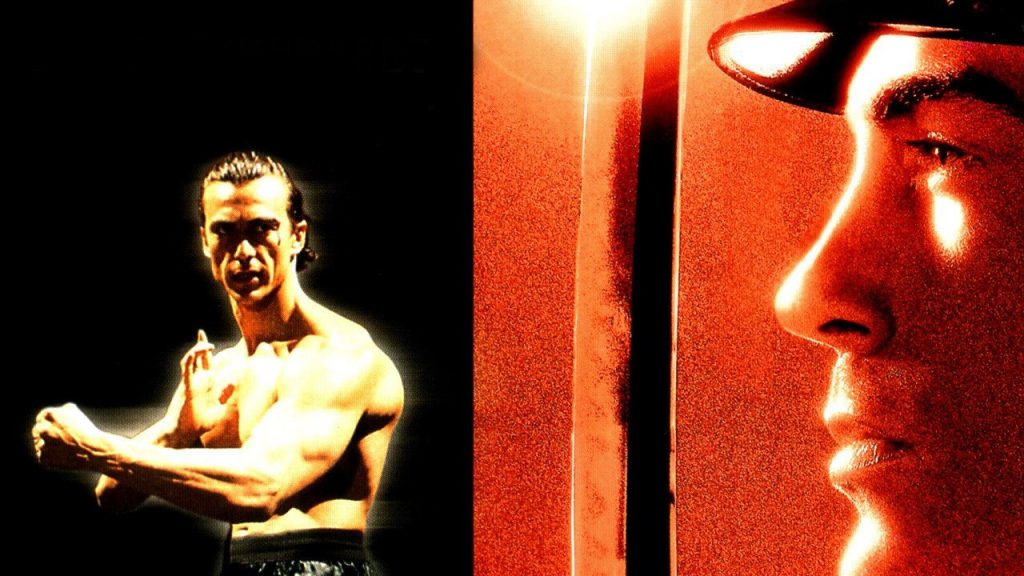
Having worked with action legends like Van Damme, Bernhardt, Dudikoff and Cynthia, what do you think are key ingredients to an effective fight scene?
Well, everyone does them differently; I mean, look at Jackie Chan. He does it shot by shot. He does just one shot where he comes in, he dodges, he kicks then he goes through a ladder or whatever and then he goes on to the next scene. I work with three cameras and I do my martial arts which started with Bloodsport and Kickboxer. My idea was I had the Kumite, I had the rings and the mat to work with. So what I was trying to do was have one camera on a crane, always shooting a master shot going up and down or left and right. You are always able to cut back and show the size of the arena and the placement of the two people on the mat. For my other two cameras one was always on JCVD and the other was on his opponent so we would follow them everywhere. I was working with Panavision on Hong Kong so I had three Panaflex cameras; it started in the Kumite in Bloodsport and we would cover every fight with three cameras wide. Then we would come in closer and cover the fight again but with the cameras tighter. Then we would get on the mat and we would do handheld with both of the actors and then highlight punches, kicks or knockouts we’d shoot at 48 or 96 frames a second. We shot a lot of coverage; I would consider on Bloodsport we shot too much coverage. We shot 250,000 feet of film; for Kickboxer I was able to pair that down as the director. We shot Bloodsport all in Hong Kong in 42 days; for Kickboxer we were in Hong Kong and Bangkok and we only shot 150,000 feet of film and came in in 36 days. So I was able to pare down the production.
My favourite shot in Kickboxer is when Kurt Sloane (Jean-Claude Van Damme) is training and all we see is the silhouette with the sun behind him. How long did it take to get that shot just right?
We were there at 4 in the morning; Van Damme was actually up on the wall and down under the camera was a real martial artist doing those exact moves and Jean–Claude (because he was trained as a dancer) was mimicking everything that the other martial artist was doing.
Kickboxer is 30 years old next year; how do you feel about it looking back at it now?
Oh it’s wonderful; I enjoy all of my films. I especially enjoy Bloodsport and Kickboxer because Bloodsport was my first film in Asia and I’m married to a Chinese Singaporean so I feel like I’m a reincarnated Asian. I get along so well with that crew and it’s one of the top three crews I’ve ever worked it in my life. That was how I was able to convince the producer to let me direct Kickboxer because of how I managed to accomplish the things that had to be accomplished on Bloodsport. So I look back on those two films very very fondly.
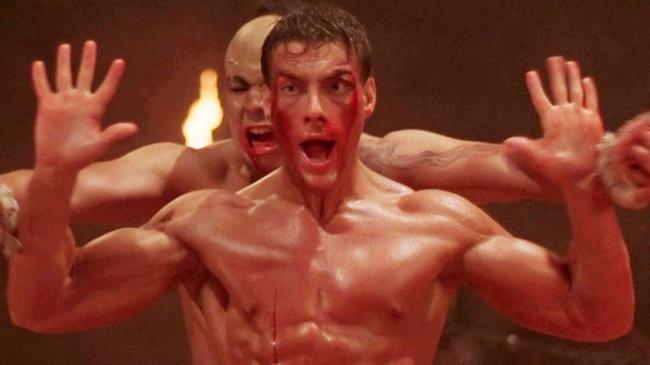
I remember watching them constantly on VHS…
There was a time when I would go through the channels on cable and I’d find Bloodsport or Kickboxer somewhere nearly every week.
Didn’t they do a recent sequel or remake of Kickboxer?
Yeah, Kickboxer: Vengeance and Kickboxer: Retaliation.
I only saw one of them and I am a big fan of Dave Bautista but I didn’t like the film (Kickboxer: Vengeance). I didn’t like seeing Jean-Claude as the trainer; I thought that was a misstep. I look at it as the sincerest form of appreciation when they try to remake your films. Usually sequels aren’t as good as the original as there was a certain chemistry that you have being the first ones there to do it. Jean-Claude was new; we were all new to it. I found Bloodsport and Kickboxer were very unique films because they were the smallest films that Cannon Pictures did during those years but they ended up making the most money back. Their bigger budget $36 million films made nothing.
In Kickboxer: Vengeance they even dubbed Van Damme for some reason and it was clearly nothing like him.
Why would they do that? He’s been JCVD for over 50 years?
Van Damme brought something to the martial arts genre the audience had never seen before – the women
I know! It made no sense and made the film feel incomplete.
That’s what the charm was in Jean-Claude Van Damme; he was a breath of fresh air in martial arts. He was trained as a dancer so he could do the splits, and he had a fantastic body which he would work out for to keep fit. He also had a charming French accent and he was handsome. He brought something to the martial arts genre the audience had never seen before – the women. Remember the scene in Bloodsport where he shows his ass when he’s getting dressed?
Yep.
I’ve had so many women come up to me when they knew I did Bloodsport they said “I bought that film just to have that shot” (laughs). It was just half a second but he knew what he was doing. He was getting that female audience and that is why his films were different from Chuck Norris or Bruce Lee type movies. They were usually just aimed towards an all-male crowd.
Speaking of Chuck Norris is it true that he initially wanted to be in Kickboxer?
He wanted it. He was dying to have that film but that was Jean-Claude’s baby. Bloodsport and Kickboxer launched his career and I was so happy to see him starring in the second Expendables with all those guys and being in a $200 million dollar film. I was so proud of him.
What was it like to work with Cannon films? Was it as crazy as people have said?
On Bloodsport (which was a Cannon picture) they never bothered us at all; they weren’t even there as we were off in Hong Kong. They just gave us $2.2 million and sent us off to Hong Kong and we made the movie. Kickboxer wasn’t made through Cannon but they ended up distributing it; that was done through King’s Road. It was something like a $2.5 million film; both Bloodsport and Kickboxer together cost less than $5 million. You can’t even go to lunch in Hollywood for less than $5 million anymore (laughs). Everything these days are like $100-200 million and I don’t think they are as good a films. It’s all CGI this, CGI that… so what? That’s easy to do; what’s hard to do is take 4 or 5 Americans and go out to a foreign country using all indigenous crew and make a movie for under $3 million and do fantastic at the box office all over the world. That’s not easy.
Several filmmakers I’ve spoken to have stated that Hollywood rarely makes mid-budget movies anymore. Would you agree?
Yeah, the only people doing those kinds of films are independents; the ones I am most excited to see are movies like Blue Ruin, Tangerine, and the recent Steven Soderbergh film where he shot it on his iPhone called Unsane. I love the fact that even the big directors are using all of the simple technology that’s out there to do a film that they want to do for much less money as you don’t have to spend so much. First of all Steven Soderbergh uses all practical lights; he doesn’t use Hollywood lighting so he keeps it practical on every set. I’ve watched his work and interviews with his actors and they all say he works so fast as he doesn’t set up any lights; he just uses practical lights. He’s also now using an iPhone which frees him up to do a movie even quicker. That’s how you can make the movies you want to make; by making them at the right budget.
A good script also helps…
I tell all my students whenever I’m teaching, I ask them what they think the hardest job in filmmaking. Doing a high fall? Getting up at 2am to get all the trucks parked? No, those are all hard but the hardest job in show business is sitting in front of the blank piece of paper or computer screen and typing FADE IN. Until you have 90-100 pages of great material… you’re fucked. I can count on one hand the amount of good scripts I’ve had and I’ve done over 40 features. This is why a guy like Sylvester Stallone had to make Rocky 5 times and Rambo 5 times – because he couldn’t find good material and that’s a major Hollywood star.
Going back to Kickboxer; there’s something I’ve always wanted to know. In the UK the film is a few minutes longer with a couple scenes that aren’t in the US version. Any idea why?
I actually have no idea; I was the kind of director where my heroes were people like D.W. Griffith and John Ford. D.W. Griffith invented the language of film by doing over 450 10 and 20 minute 1 and 2 reel films between 1900 & 1905 for a company named Biograph. He and his Cinematographer were doing a new move every week and inventing the master shot, the medium shot and the close-up. They were cross cutting between the people in peril and the cavalry. He invented all of that language. John Ford made 50 10 day westerns before he ever made his first meaningful feature. Even though I did over 40 films in my life I was never going to get those kinds of chops. So any film that came across my desk I would do. It didn’t matter what it was; I would do it trying to practice my craft as much as I could.
Were you ever approached or interested in doing any of the Kickboxer sequels?
I’m happy to do sequels; of course I did Lady Dragon 2 because there were so many unanswered questions after the first movie. I also did Shark Attack 2 and 3; I’m not opposed to doing sequels but nobody ever even gave me a phone call to do any of the Kickboxer sequels.
We did a poll recently for fans to vote for their favourite JCVD films and Bloodsport ended up being number 1 and Kickboxer was number 2 so after all these years they are still firm fan favourites…
Yes! There’s something ethereal about the first films. The stars align and getting it right and having it be a hit then all of the time you spent trying to recreate that again doesn’t always work.
How much of Kickboxer did you direct and how much did Mark DiSalle do?
I don’t remember the name… I’m kidding. He was the producer on Bloodsport and Kickboxer and he ended up stealing my directing title. A week before the titles went on he called me into his office and said “I’m gonna share your directing credit.” I said “why? Why would you do that? You did exactly the same thing you did on Bloodsport; you were there every day, you looked through the camera, you talked with everyone, nothing was held back from you and you were part of the team!” So now it says in the main titles “A Mark DiSalle film” and “Screenplay by Mark Disalle”. So I asked him “what do you need my credit for?”
So I was very pissed off about that; he didn’t do anything different in Bloodsport to what he did in Kickboxer except Bloodsport was a DGA film; the director of the film was in the DGA so he probably felt he couldn’t steal it from him. I was non-DGA at the time so he thought he could stick his name up there in the credits as co-director. I storyboarded everything, I rewrote the script and I rehearsed the actors. We even had Jeff Speakman lined up in case we couldn’t get Jean-Claude back; that was gonna be the next guy in line we were going to use. Mark ended up using him in Perfect Weapon at Paramount. Then he got fired for taking kickbacks from the crew. What a nice guy, huh?
Wow…
I could show you my storyboards shot by shot, except the fight scenes which I never storyboard. I leave that up to the fighters. I just place the three cameras and cover them. Needless to say he’s persona-non-Grata in our house.
When I was younger I always found Tong Po absolutely terrifying and he remains one of JCVD’s finest adversaries. He barely has any dialogue which is the perfect type of villain. Is it true Michel/Mohamed Quisi had been working on choreography behind the scenes and volunteered for the role?
He and Jean-Claude grew up together. You can see him in Bloodsport where he had a full head of hair. For this we shaved his head; he wanted to do the part so one day he had the makeup department put on a skull cap and he looked so menacing so I said “that’s our guy”. You could see the skull cap would never work so he shaved his head and that is now such an iconic image. The scene I created with him kicking the pillar I designed in my head and I shot it exactly as it was designed. That showed off the kind of menace that he was and he didn’t have to say anything. He’s now directing films and still starring in some; that film and that iconic image made him all over the world. I worked so hard on that film and it was a really smooth shoot. We were on schedule, on budget and even though we had 10 days less and shot less film I had it so organized and storyboarded that I would only shoot what I needed and at the end of the first week the editor and DiSalle had a meeting with me and the editor said “please tell him to let the camera run a little more as I barely have a few frames to cut on” (laughs). That’s how closely I was following my storyboards and shooting just what was necessary.
Was anyone else ever considered for Tong Po?
We looked and looked. We tested everyone and even tested Bolo again but then it was right under our nose. It’s like what happened with Indiana Jones where Harrison Ford was building office furniture as a carpenter and they said “what about him!?”
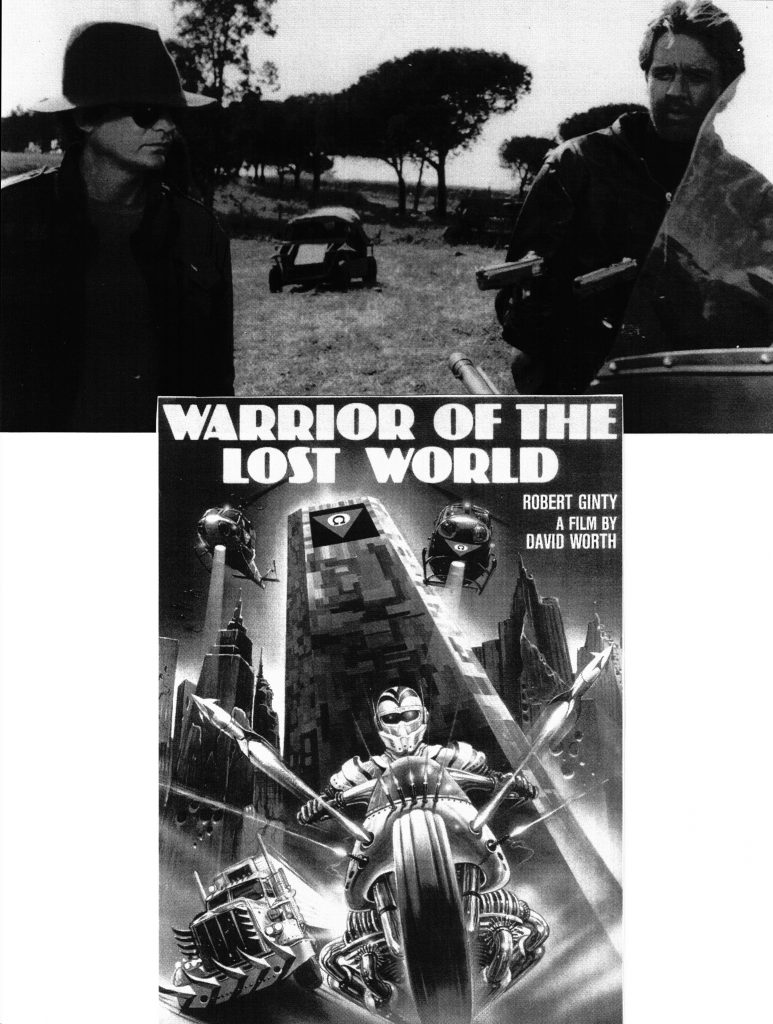
I was watching Chain of Command again recently and there really are some impressive kills in that movie including one guy getting set on fire. What was it like to work on stunts like that?
Whenever you’re dealing with anything like that you’re 1000% safe. That’s why I use multiple cameras when I’m doing action. I want to make sure I get it the first time. I don’t want the stuntman to have to do it again where you’re really putting the man’s life in danger. They have a lot of safety precautions but I’m always very tentative when dealing with full body burns and things like that. You want to be very careful, take your time and the rule is never rush a stunt. You can rush a lot of things in filmmaking and sometimes you have to because of the schedule but don’t rush a stunt.
There’s been a lot of talk recently about stunts getting the respect they deserve at the Oscars; do you think there should be a category for Stunts?
Why not? There’s Best Costume, Best Visual Effects, Best Art Direction, Production Design, Sound so why not stunts? Absolutely there should be.
Regarding the drink choice I’m sure that was R. Lee Ermey’s idea
Going back to Chain of Command… R. Lee Ermey’s choice of drink…
(Laughs) He was my hero! I just love R. Lee so much because of Full Metal Jacket. He would often tell stories about working with Stanley Kubrick and one favourite was after his “reach around” speech and Stanley comes over after and asks him what a reach around is (laughs). He just WAS that person; he had been that person in the Marines for 10 years and when he came on the set they already had another actor hired for the part of the drill sergeant. R. Lee was so smart he went to wardrobe and had them put him a in a drill sergeant’s uniform and when he was rehearsing the actors every day Stanley saw those rehearsals and saw that he was the guy to do it.
Regarding the drink choice I’m sure that was R. Lee Ermey’s idea. He was just a wonderful and creative person and a fun guy to be around. He was the easiest guy in the world to work with. He comes prepared, knows all his lines but he got that from Kubrick. That was Kubrick’s thing; you had to show up every morning and know all your lines and be able to give the performance full on, all day, every day.
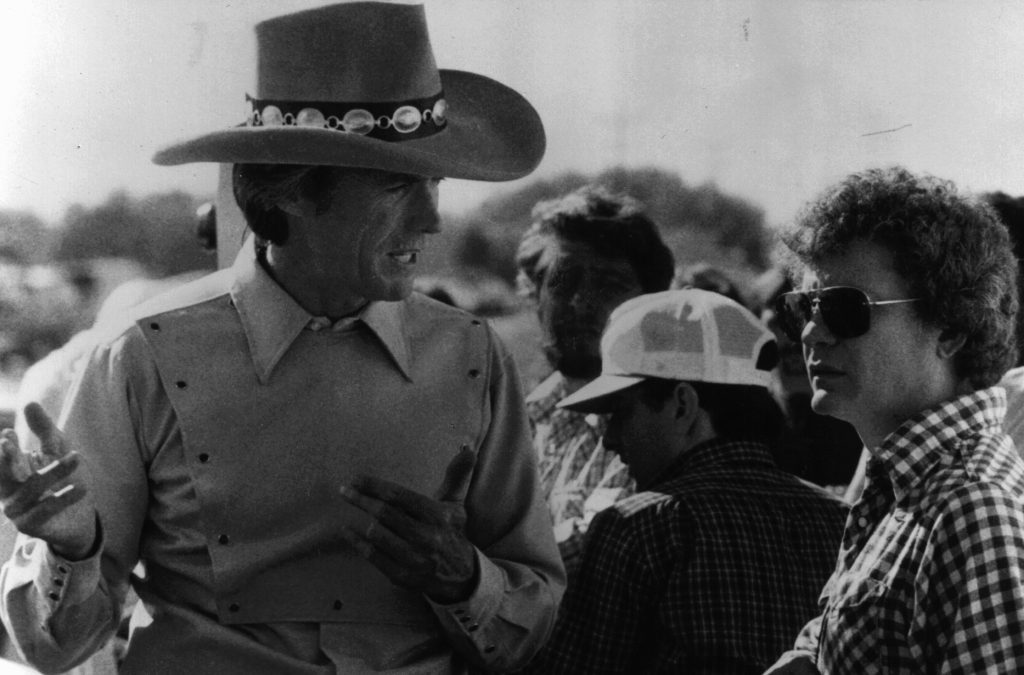
Was Full Metal Jacket your favourite Kubrick film?
No. I think 2001: A Space Odyssey and A Clockwork Orange. I have a very special allegiance to Clockwork Orange. Back in the 1970’s I did a film called Death Game with Sondra Locke, Colleen Camp and Seymour Cassel. It was a $150,000 film; they called me in to take over the cinematography because the DP was fired. I wasn’t even sure I wanted to do it. Then I realised who the cast were. I took it over and shot 150,000 feet of anamorphic Panavision in a house in Hancock Park, Los Angeles in 13 days. It was an ordeal. Then a couple of months after it was done the director asked Sondra and I to come look at a screening and during the screening I’m saying “where’s this shot and that shot?” So he took me and Sondra to the editing room and I could see where things were so I edited and changed a few scenes showing him that the Editor was absolutely the worst Editor you could possibly find. He was just not doing any service to the film. They fired him so I took over so I was not only doing the cinematography but also the editing.
Sondra was very worried because it was her face up there and she would go on after this movie to star in The Outlaw Josey Wales and have a 13 year relationship with Clint Eastwood. This is how I got my foot in the door with Clint Eastwood because Sondra remembered how good I made her look in that film and how I saved it editorially. Back in the day you had to put each actor on a different thousand foot role of sound so that the mixer could set the sound levels. On a Saturday morning I look in a box and I find a print of Clockwork Orange with French subtitles. Now I can study Mr. Kubrick and Mr. Alcott’s work up close and personal. So I put mine to the side and put this one on; as it was a print there was no sound so I would move it back and forth and just study the cinematography.
So I get to the scene where Alex kills the lady with the sculpture and I get to the end of the movie and I go “What the fuck?”. I can see the camera moving all-round the room, seeing all four walls… and there are no movie lights. He had brought in light sculptures, plugged them into the wall sockets around the room and said “OK, let’s shoot”. This completely blew my mind and was a moment which was more of an epiphany as a cinematographer; I even wrote an article for the American cinematographer years later called “If it’s Good Enough for Mr. Kubrick… Why Aren’t More People Using this Method?”
It’s being used a lot in this century now but in 1970 this was Stanley Kubrick and him discovering that the old way of working and lighting this end of the room or that side of the room could change to where he knew he could get away with practical and available light.
So over the next few years Sondra kept mentioning my name to Clint and that was how I got to working on Bronco Billy and Any Which Way You Can. I used that exact same style in Bronco Billy; I built all the lighting into the sets using practical bulbs so Clint Eastwood could come in, shoot in any direction and he never had to move a light. As a result Bronco Billy (which was my first union film and my first major studio film) came in 2 and a half weeks under schedule. We saved the production over a million dollars because all of the light entered the sets. That’s how I got to do 2 Clint Eastwood movies where he said “why don’t you hang around for a month as we’re gonna start up another one.”
Finally, what future projects are you working on?
I actually have a script for Lady Dragon 3 entitled Death Match; the producers from Jakarta contacted me last year when they were at AFM and asked if me and Cynthia wanted to do a sequel. I had it all up and ready to go but they couldn’t find the money or the distribution so it’s kind of in limbo.
I have another film that I really don’t want to talk too much about but it’s a re-imagining of the Dirty Harry franchise. My concept would be played by his son Scott Eastwood.
I find in life a page turns every so often and the page turned for producing for me about 10 years ago so I went on to do teaching at Chapman University and other places. Last year that page also turned so I have been looking for work as a filmmaker and a film professor. I am in what I like to call a non-consensual retirement.
If you want a real breakdown of what I’ve done you can go to Amazon.com and get my book Zen and the Art of Independent Filmmaking: A Cautionary Tale. That has everything from the very beginning to almost the end.




